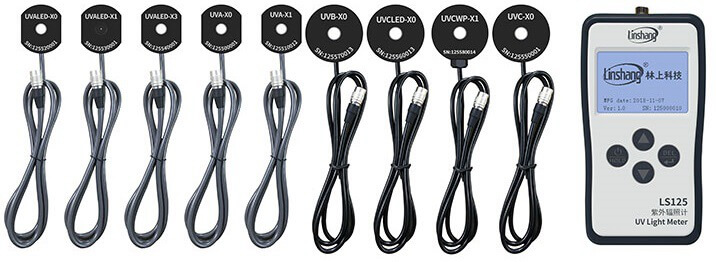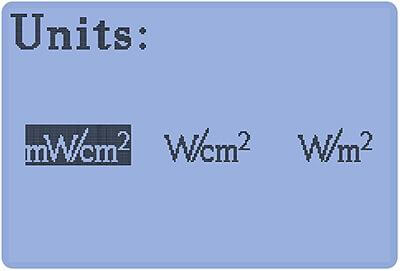Select the Right UV Radiation Meter for UVA, UVB and UVC
Ultraviolet light is widely used in our daily life and various industries such as ultraviolet sterilization, ultraviolet curing, crawling and so on. Ultraviolet radiometer is referred to as UV light meter, which is used to measure ultraviolet radiation intensity and energy. UV light can be divided into UVA, UVB, UVC and UVV. Among these four wavelengths, UVA, UVB and UVC are most commonly used. Do you know their application and how to measure their UV radiation intensity and energy? Follow us to read this passage.
1. UVA, UVB and UVC application
UVA application: UVA wavelength can be used in UV curing, PCB exposure, 3D printing, optical communications and other industries.
UVC application: Ultraviolet rays in the UVC band can be used for sterilization and disinfection. 254nm germicidal lamp is used for sterilization.
UVB application: Ultraviolet rays in the UVB wavelength can be used for measuring the radiation intensity and ultraviolet energy of plant growth lamps, reptile lamps, phototherapy lamps, electric welding arcs, etc.
Since UVA, UVB and UVC wavelength has different spectral response. Different UV meters are needed to measure the UV intensity and UV energy. The Linshang ultraviolet irradiance meter is a very portable instrument, let's take a look at it in detail below.

2. How do we select the right UV radiation meter?
To select the best UV radiation meter for your application, you need to know what characteristics of the instrument that matters.
1. Spectral response
UVC ranges from 200-275nm, UVB ranges from 275-320nm, UVA ranges from 320-400nm. In order to accurately measure the ultraviolet intensity, the response band of the instrument and the ultraviolet band should match. Linshang LS125 UV light meter can be equipped with 9 probes, which can measure UVA, UVB and UVC. For details, please read“How to Select the Best UV Light Meter For Your Application?”.
2. Measurement range
UV meter measurement range plays an important role. The units of LS125+UVALED-X0, LS125+UVA-X0 and LS125+UVALED-X1 are mW/cm². These three probes are developed for UV curing. The power UV curing light source is usually larger as well as the measurement range. The other probes use the unit as μW/cm². Next, we’ll introduce the unit conversation.

3. UV radiation intensity and energy unit
The international common UV energy units are joule (J/joule), kilojoule (KJ), megajoule (MJ), gigajoule (GJ). The unit of light intensity is usually expressed in J/m² and mJ/cm². So how exactly are these energy units converted?
Conversion between energy units:
1J/m² = 0.1mJ/ cm²
1J/m² = 1000mJ/ m² = 1000000uJ/m²
1J/cm² = 1000mJ/ cm² = 1000000uJ/ cm²
1 Joule (J) = 1 Newton•meter = 1 Watt (W)•Second (S)
Conversion of UV intensity unit:
1 W = 10³ mW (milliwatts) = 106 uW (microwatts)
And the power unit: E = W *t
1W/m² = 1000mW/ 10000 cm² = 0.1mW / cm² = 100 uW / cm²
1W/m² = 1000 mW/ m² = 1000000uW / m²
4. Sampling speed
Do you know what this data represents? The power value is constantly changing during the measurement process. And energy = power * time, so the faster the measurement speed of the instrument per second, the more accurate the measured data. When the sampling speed of the instrument reaches 2000 or more, the power change value is very small and can be ignored.
5. Measurement principle
The measurement principle of the handheld ultraviolet radiometer is that the photocell is a photoelectric element that directly converts light energy into electrical energy. When light hits the surface of the sensor, the incident light passes through the metal film to reach the interface between the semiconductor selenium layer and the metal film. A photoelectric effect is generated on the interface. The magnitude of the generated potential difference is proportional to the illuminance on the light-receiving surface of the photocell. After the CPU reads the voltage, it calculates and displays the data on the screen.
The UV meters produced by Linshang Technology (UV meter manufacturers) are relatively comprehensive. If you want to know whether your UV light source can be measured, please consult our engineer.